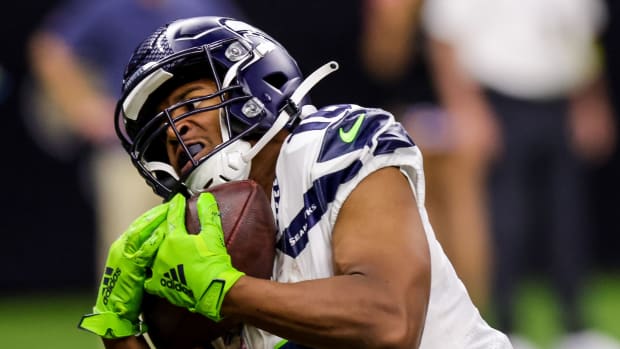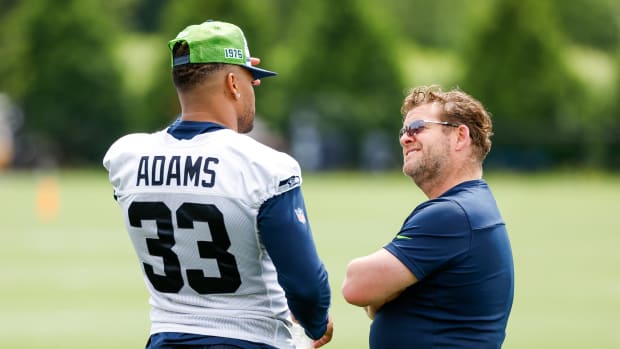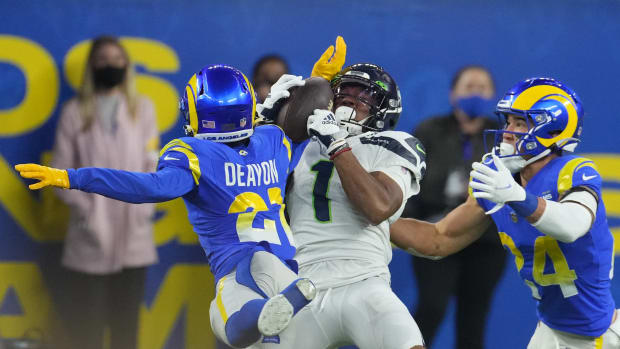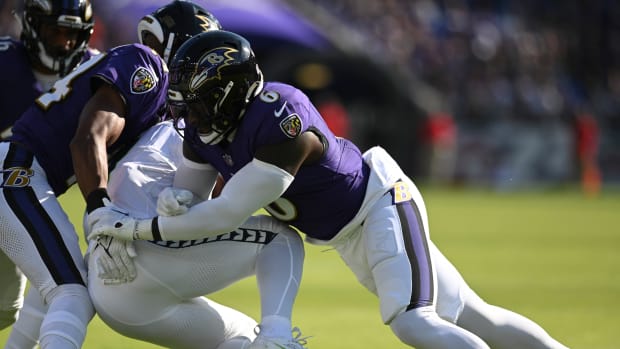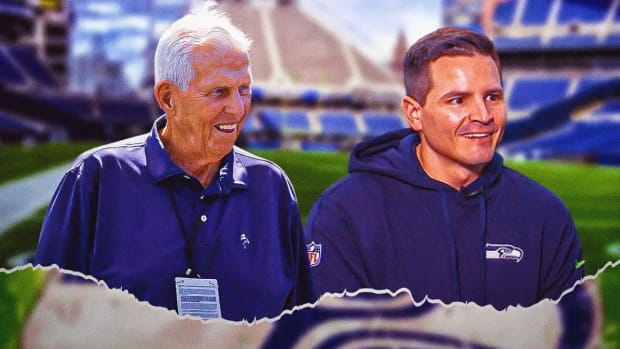Analysis: Kam Chancellor, Super Bowl XLVIII, and How Seahawks Play Cover 3
On the eve of Super Bowl LV, Seahawks legend and potential future Hall of Famer Kam Chancellor provided a fascinating description of one of the great big game plays: the strong safety’s own pass breakup versus Wes Welker and the Broncos in Super Bowl XLVIII. This insight helps explain Seattle’s cover 3 defense.
“I recently went back and watched some highlights from that game,” Chancellor wrote in The Players Tribune. “And there was one play - one moment - that stood out to me above all the others. One that a lot of folks probably don’t know about.”
This play did stand out to the film grinders. When the Seahawks run their cover 3 defense, they know that the middle of field closed, three-deep, four-underneath zone coverage is weak down the seams, and therefore especially vulnerable to four vertical routes.
Although the Seahawks look to drop to a spot and vision the quarterback in zone coverage, they have certain indicators - pre and post-snap - to make their coverage more aggressive. In the case of seam routes versus cover 3, Seattle compensates by regarding them as one of these “indicators,” matching them downfield.
Typically, Seattle uses its high safety (often the free safety) and leans him 60-40 in his middle deep 1/3 to one seam. The down safety (mainly the strong safety) matches the second seam route from his underneath zone. Versus a 2x2 distribution from the offense, the Seahawks call “seam alert” to make sure the safeties stay aware of this threat.
Whether Seattle is in cover 3 sky with the down safety in one of the two outside underneath zones, or running cover 3 buzz with the down safety in one of the two inside underneath zones, the Seahawks expect their down safety to match the second seam.
Armed with this knowledge, let’s return to Chancellor’s Super Bowl XLVIII play.
“It was early in the third quarter,” Chancellor continued. “We were up 29-0 and the Broncos came out in 11 personnel—that’s three wide receivers, a running back, and a tight end. They were in twins right with Wes Welker in the slot. I was lined up on the opposite side over the tight end.”
The formation was a 2x2 distribution, so Seattle’s coverage would have been alert to the seam threats.
The Seahawks were in nickel personnel. They made a ‘jet’ call to their defensive ends, putting them in wide 9 techniques. This is a typical gun adjustment to their tank front—tank is an over g front (2i, 3-technique) with the WILL linebacker walked down to the tight end.
Behind this jet front, Seattle ran buzz coverage with the strong safety playing in the strong hook. This defensive family, tank front with buzz coverage, is called “Phoenix.” Chancellor would often play his hook zone from depth, which helped disguise the coverage pre-snap as possibly being the man defense of cover 1 robber or even a cover 2 zone rotation.
“At the snap, the tight end and wide receiver on my side ran go routes,” Chancellor narrated.
The strong safety read his triangle well, doing an excellent job of honoring the play-action, given that he was responsible for the A-gap in the run fit, before seeing the high hats of the offensive line and the vertical release of the tight end—the No. 2 receiver for Chancellor.
Given that Chancellor’s cornerback, Byron Maxwell, began the play pressed on the line of scrimmage in read 1/3 technique and then had his receiver run vertical, Kam’s pass coverage assignment dictated that he must match the seam route from the tight end. To Chancellor’s immediate vision, this looked everything like the classic cover 3 beater of four vertical routes. So he fittingly gained depth and leverage on the stem of the tight end.
However, Denver was trying to exploit this seam matching with an intelligent offensive design. Chancellor was alert to this.
“From watching film, I knew the Broncos liked to stretch the field deep and bring Welker across on a drag route underneath the zone,” Chancellor explained.
What happened next is best described by Chancellor: “So I stayed with the tight end up the seam, keeping one eye on Peyton [Manning] in the backfield. He looked my way, and then I felt Welker slide into my zone underneath. I peeled off and got to him just in time to punch the ball out for the pass breakup.”
“BOOM! Incomplete,” Chancellor summarized.

Drawing by Kam Chancellor (he drew this as a tank front with the WILL walked down to the tight end, not jet)
This is the type of concept that offensive coaches would have been drooling over in game-planning meetings. Chancellor was not supposed to make this play; there is no way that a 6-foot-3, 231-pound man should be able to flip his hips like this.
“It was really just a regular play,” Chancellor understated. “But the best part was that on the film I watched had some of the players mic’d up, and after the play, I heard Peyton say something like, ‘Man, that guy wasn’t there all year!’”
“And right when I heard that, I literally jumped out of my seat and started yelling at my laptop, like, ‘Man, I knew that play was for me!’”
What was so outstanding about the Seahawks’ defensive domination of the Broncos was their physical annihilation of concepts regarded as cover 3 "beaters." More than that, Chancellor’s play showed the trust and understanding the team had with each other. Chancellor knew he could come off the tight end because free safety Earl Thomas was back in the post after passing off Welker.
“See, the Broncos had watched their film, too, and they must have seen me stay with that tight end on the go route,” Chancellor assessed. “So they thought Welker would be clean underneath. They had designed that play specifically to beat me. But I sniffed it out.”
The Broncos tried to run Chancellor off deep to create a void beneath him, knowing that it was behind the underneath zone coverage on Welker’s original side and that it was beneath the deep, 60-40 middle 1/3 zone of Thomas. Denver expected a big play here to beat the seam-matching coverage. Instead, like the rest of the Super Bowl, Denver was beat down and Chancellor rocked the receiver. And that stare down!!!
Seattle’s cover 3 is relatively simple, with consistent rules and not too much going on. This enables players to be free and fast, making big plays. At the Seahawks’ defensive best, there is enough Xs and Os complexity sprinkled in to beat even the most potent of offenses.
“I remember the week of that game, at media day, Wes Welker had said something about how he’d take anybody one-on-one in the slot, anytime,” Chancellor concluded.
“You know we heard that.”


